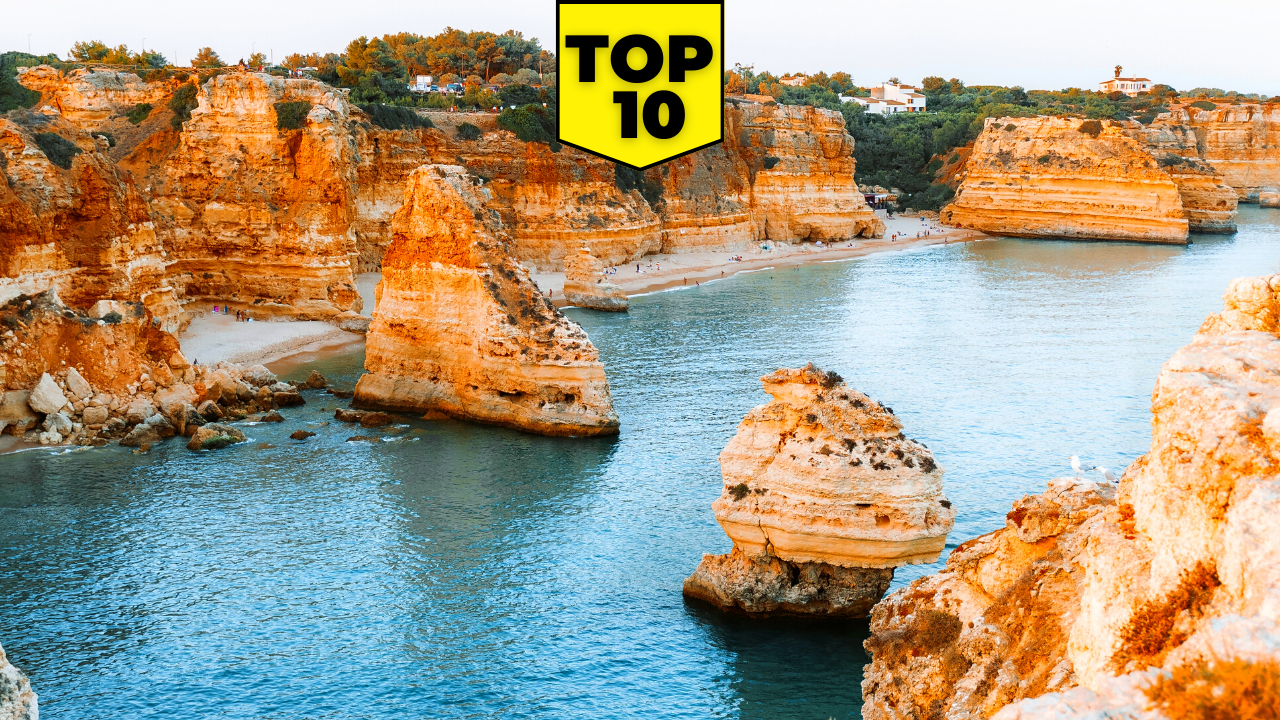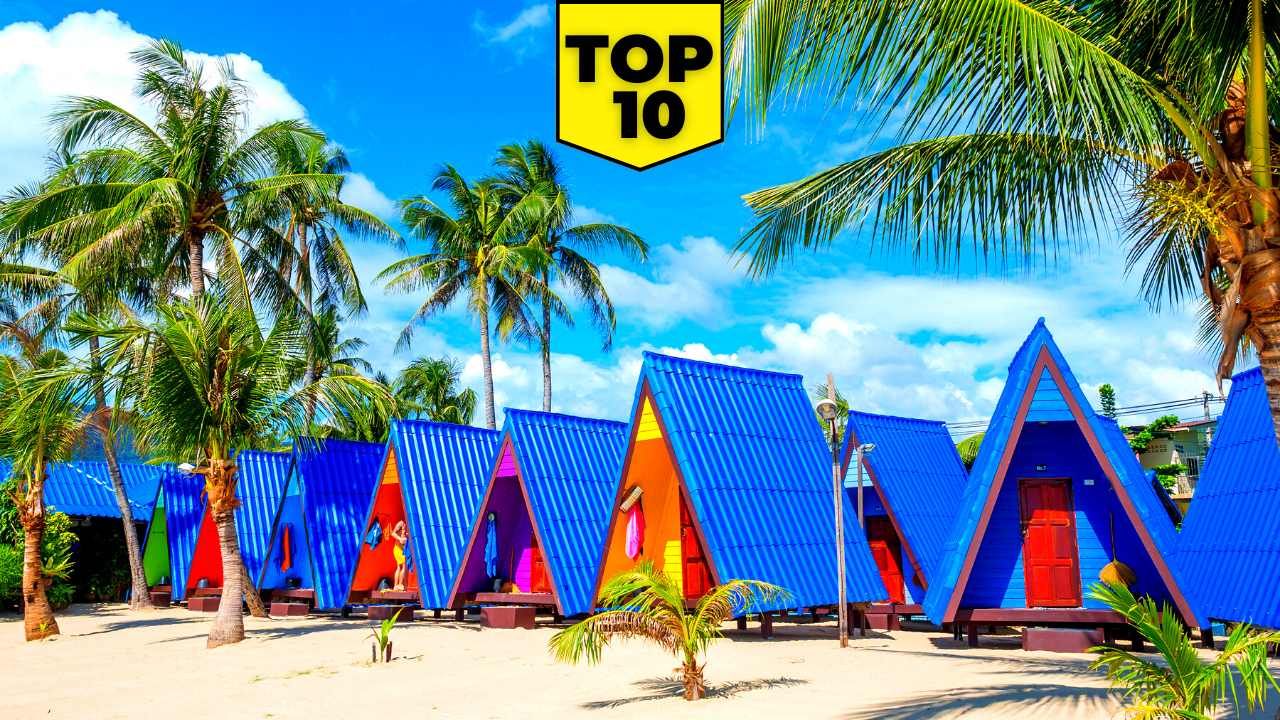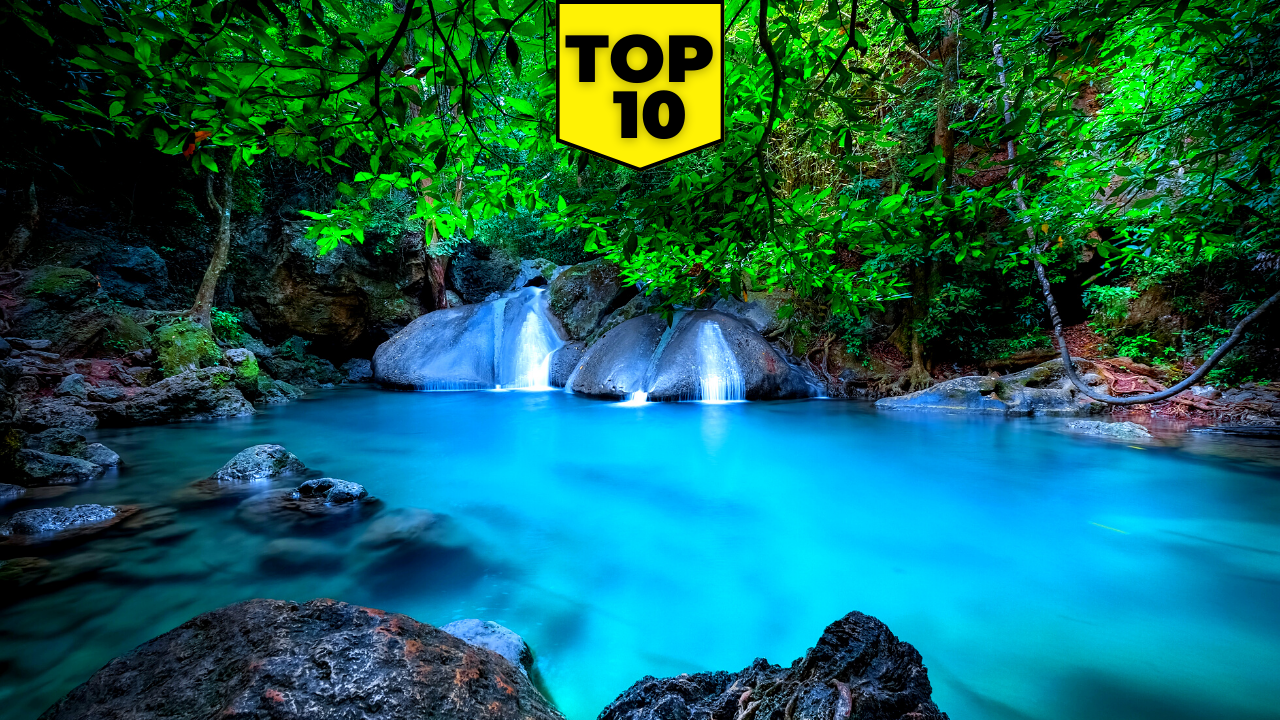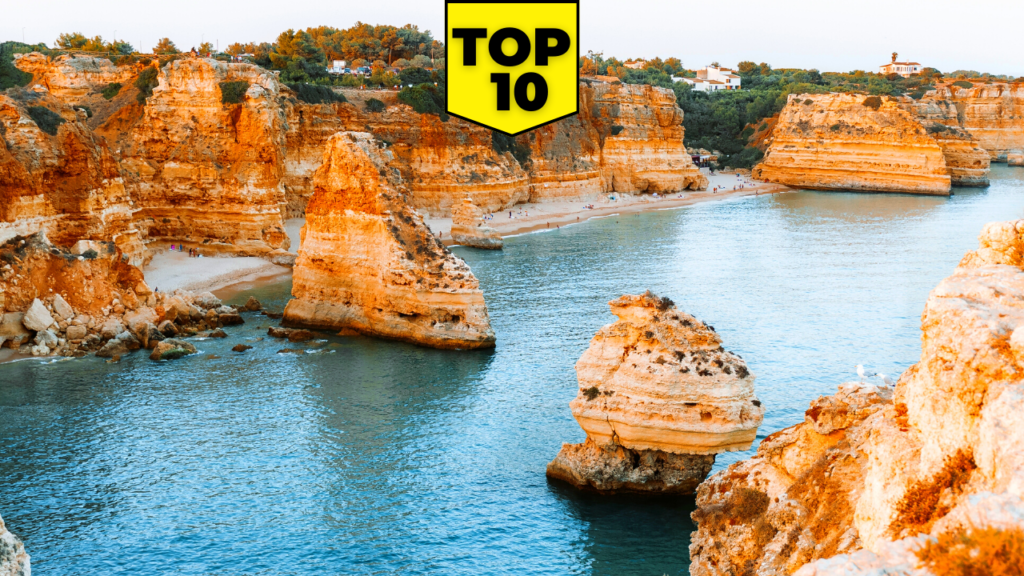
The southern Algarve region is the CROWN JEWEL OF PORTUGAL, with a stunning coastline, incredible caves and arches, fantastic weather all year round, and waves that are a surfer’s dream come true.
There are many activities to do in the Algarve, including relaxing on idyllic beaches, discovering coastal caves, playing golf at some of the best courses in Europe, and getting lost in quaint old towns.
More than half of all tourists to Portugal spend their vacations here. Let’s go over the top 10 places to visit in Algarve.
Table of contents
10. Vila Real de Santo Antonio
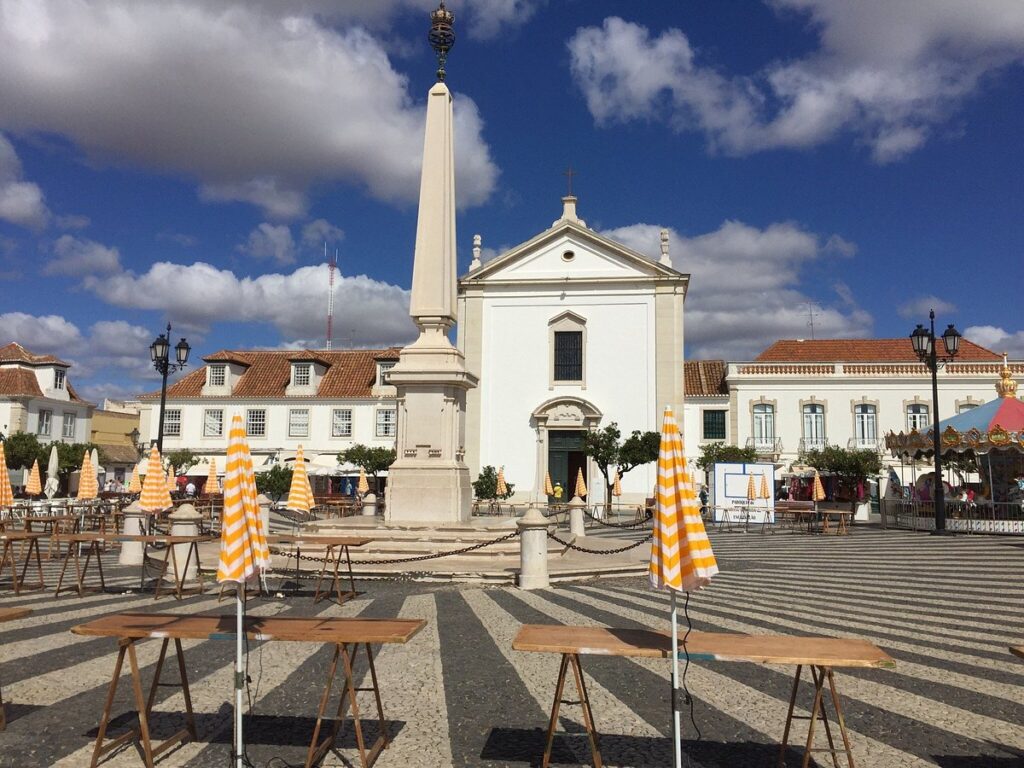
This is about as close to Spain as you can get without actually crossing the border, therefore Spanish and Portuguese are equally likely to be spoken here.
Vila Real de Santo António’s stores and marketplaces are indeed targeted at tourists from Spain, but this pleasant border town also boasts a lot of tourist sites worth seeing.
With a lively interactive display that is open to the public, the superb ARQUIVO HISTORICO MUNICIPAL on Avenida da Repblica recalls the region’s virtually extinct sardine and tuna canning industry.
A striking mosaic sunburst emanates from an obelisk in the center of the attractive main square, PRACA MARQUES DE POMBAL, which is surrounded by orange trees and a wide selection of welcoming cafés and restaurants.
Take the ferry to the Spanish border town of AYAMONTE, with its vibrant tapas eateries and classically designed delicatessens, from the pier near the marina for a fun-filled detour. The journey across the River Guadiana on the ferry, which can also accommodate cars, takes around 20 minutes.
The evergreen village of CASTRO MARIM, which is dominated by a majestic 13th-century castle, is 10 minutes drive north of Vila Real. Its huge ramparts, which are accessible to the general public, provide lovely views of the nearby coastline Reserva Natural do Sapal natural park.
9. Alcoutim
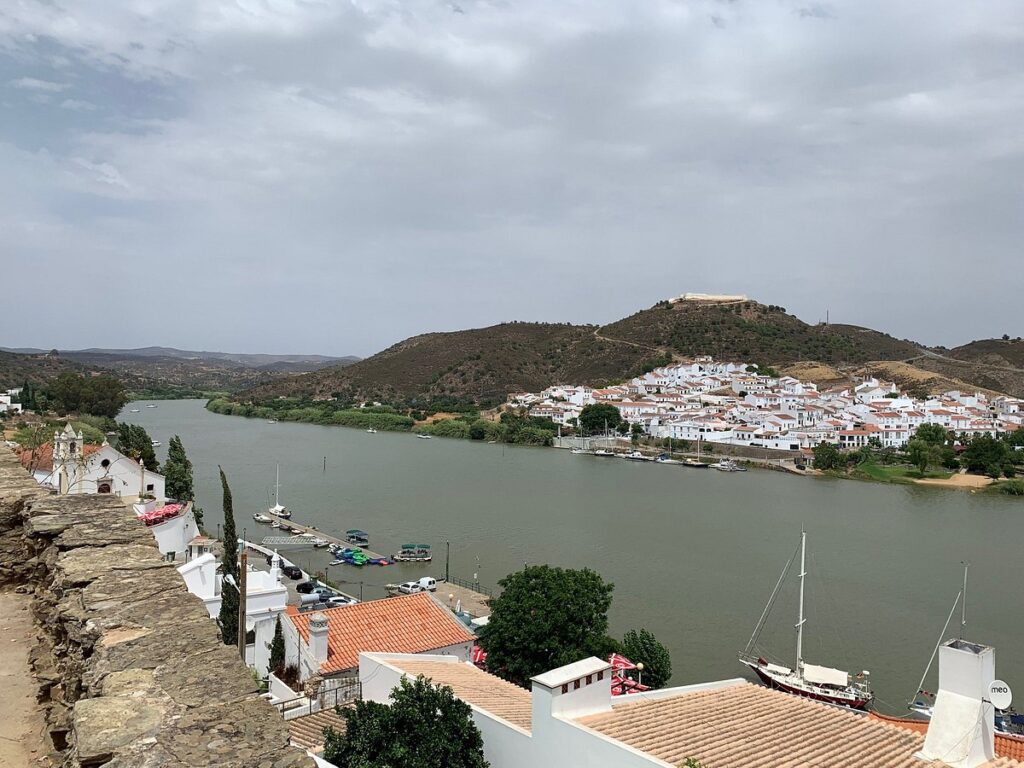
The interior of the eastern Algarve, which is arid and poorly populated, is rarely traveled to and is generally not listed on any tourism websites.
Alcoutim, a gorgeous border community, is located around 40 kilometers north of VILA REAL. The journey itself is worthwhile.
Follow the road that hugs the GUADIANA RIVER, a wide, meandering canal that serves as a natural border between Spain and Portugal, rather than taking the IC27 dual carriageway. This riverbank jewel is marked by a whitewash smear, and the tiny hamlet appears to have been conjured by a particularly gifted artist.
Alcoutim, a key river port once ruled by the Greeks, Romans, and particularly the Arabs, later served as the location of the peace agreement signed in 1371 between King Fernando I of Portugal and King Enrique II of Castile. Visitors are still greeted by an Alcoutim that is peaceful and asleep. Exploring the 14th-century castle is the ideal place to start tourism.
The Spanish community of SANLUCAR DE GUADIANA, located on the other bank of the river, may be seen from the castle walls, which also provide beautiful views of the surrounding area.
8. Tavira
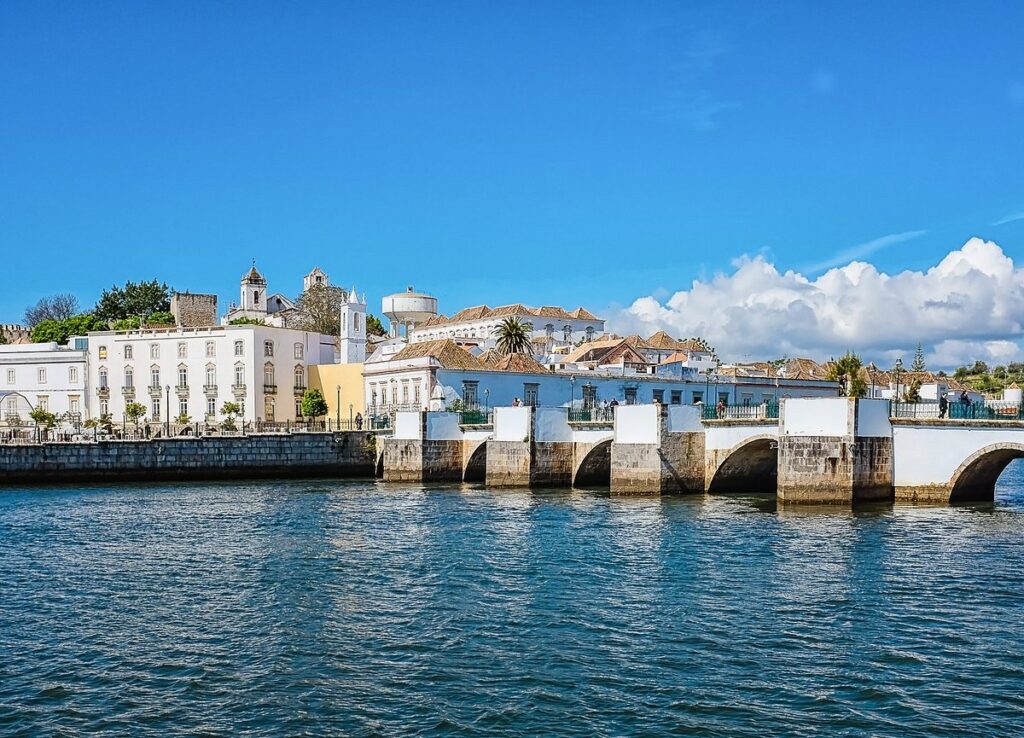
Tavira is one of the most attractive towns in the eastern Algarve, close to the shore. This popular tourist site is located on both banks of the broad RIVER GILAO and is known for its historical history, which was formed by the Romans and then the Moors, whose town along the river was capped by a CASTLE that is still in existence today.
This region of the Algarve is the only one with the hipped roofs that characterize most of Tavira’s architecture.
The old town is adorned by 21 churches, which is also how many there are in total. A magnificent BRIDGE that spans the river was constructed in the 17th century on Roman ruins.
One of the greatest ways to experience Tavira is to stroll down the riverbank; in the summer, the palm-lined gardens are flecked with color, and a nearby market is stocked to the gills with seasonal produce.
Ferries leave from the wharf for the popular sun-seeker location of ILHA DE TAVIRA, one of the few islands in the region where camping is allowed. A magnificent, pristine river that is a part of a natural park, the RIA FORMOSA, is another option for a sightseeing trip.
7. Silves
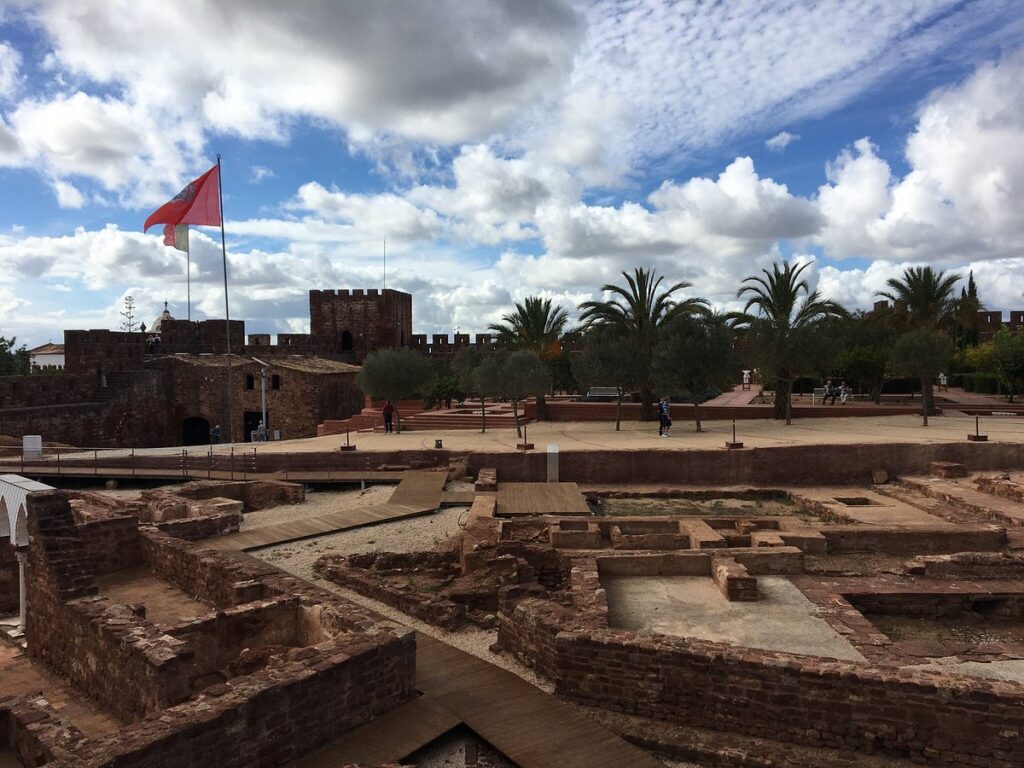
Silves is one of the most picturesque towns in the Algarve, perched on a hilltop overlooking a rich valley dotted with orange groves, olive trees, and vineyards. However, the town’s magnificent CASTLE, the largest monument to Islamic control in the area, dominates the landscape.
The castle, which was constructed by the MOORS in the 11th century on Roman foundations, has a striking profile that is accentuated by its copper-red walls, some of which reach into the nearby town. This was Xelb, the al-Moorish Gharb’s capital. A stunning Arab water cistern with an 18-meter-deep well is the centerpiece exhibit at the MUSEU ARQUEOLOGICO, which is home to another excellent example of Islamic presence.
Silves is worth leisurely exploring. The Sé (cathedral), which was erected on the site of Xelb’s Grand Mosque between 1242 and 1577, is located below the fortification. The 16th-century IGREJA DA MISERICORDIA is located across the street and features a beautiful Manueline side door.
6. Serra de Monchique
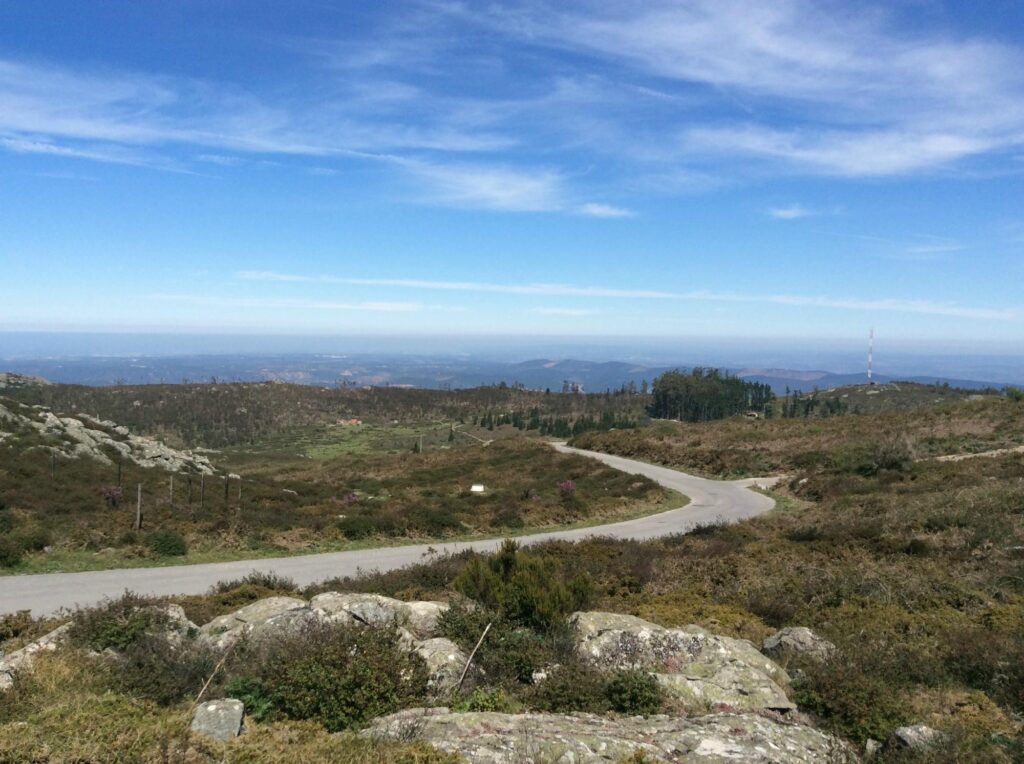
The Serra de Monchique, a rolling mountain range that lends a stunning perspective to the area’s western countryside, provides an alternative to the Algarve’s coastal scene.
Monchique is surrounded by beautiful wildflower meadows, and its slopes are covered in chestnut and eucalyptus, providing a lush environment for a variety of species. The shaded woodland is home to a network of nature trails, one of which extends all the way to FOIA, the highest point in the Algarve at 900 meters.
On a clear day, the breathtaking view encompasses the entire western portion of the area, including Lagos and Sagres, as well as the Atlantic Ocean beyond.
The charming hill town of MONCHIQUE, which is known for its traditional handicrafts like the x-shaped folding wooden chairs based on an antique Roman design, makes a great base from which to explore the surrounding area.
5. Lagos
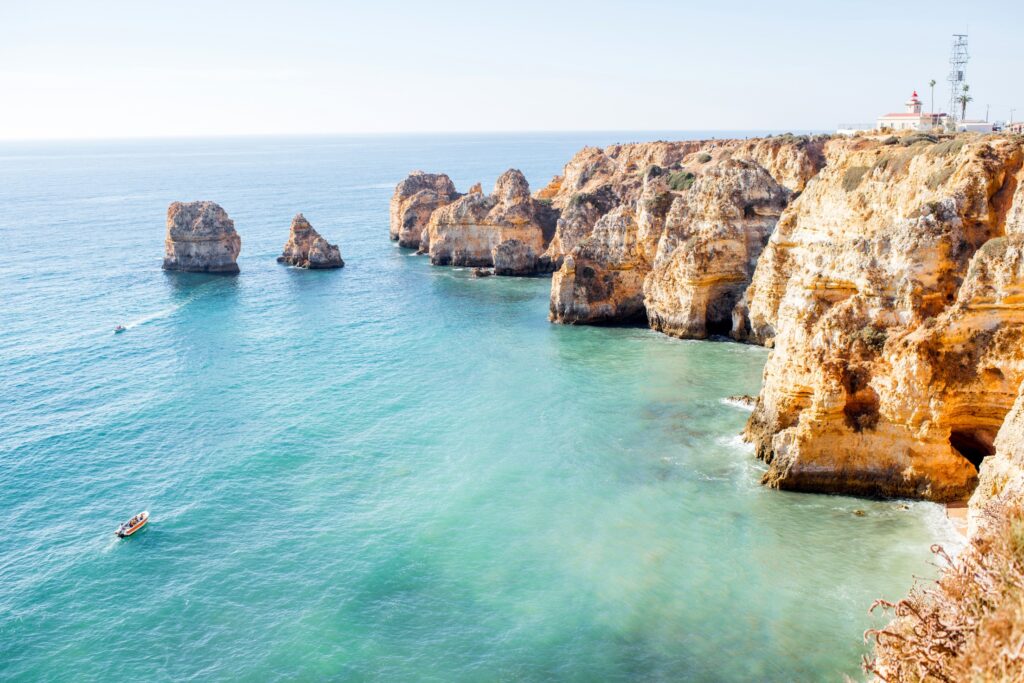
Lagos is the busiest tourist destination in the western Algarve. It has a lot of historical significance as well. In the fifteenth century, Prince Henry the Navigator, who later served as governor of the Algarve, led Portugal’s AGE OF DISCOVERY from Lagos.
Lagos is proud of its naval legacy because of its remarkable vision and the bravery of the daring explorers who set sail for undiscovered waters, which helped put Portugal on the map of the world.
Visitors are always captivated by the town’s historic ensemble of CASTLE WALLS, ELEGANT CHURCHES, AND STRONG SEA DEFENSES, but tourists are drawn to the seashore. Some of the Algarve’s most picturesque beaches have as their background a breathtaking stretch of cliffs, caves, and grottoes.
The greatest way to experience Lagos’s many tourist attractions and activities, which include sightseeing cruises and dolphin safaris, is by boat.
4. Albufeira
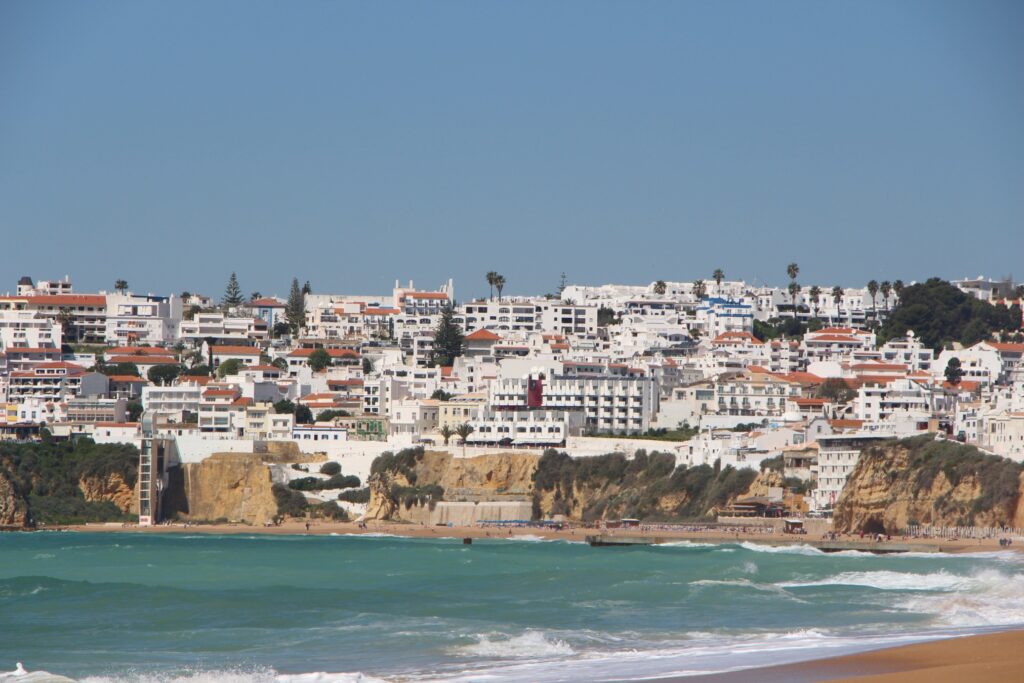
Many Algarve vacationers choose Albufeira as their destination. It is a favorite among travelers from all over Europe and beyond due to its convenient location on the southern Portuguese coast, which makes it one of the area’s most accessible resorts.
The original Albufeira, which is perched on sandstone cliffs above a large sandy bay, was a sleepy fishing community that consisted only of a collection of whitewashed homes, a chapel, and a church. If you go back much earlier, the ROMANS are the ones who constructed the castle, which the MOORS later strengthened. The beaches, however, are what draw the most visitors to the area.
Walking distance from the resort is some of the most beautiful beaches in the Algarve, which have breathtaking cliff-backed bays lapped by warm, shallow water. Because of this, Albufeira serves as the Algarve’s tourism hub.
3. Quarteira

Quarteira was one of the FIRST RESORTS to be constructed on the Algarve coast and is a lesser-known jewel in southern Portugal.
A beachfront city, Quarteira is distinguished by high-rise structures with breathtaking views of the beach. Since the 1960s, it has become a well-liked vacation spot. This former fishing community has evolved into a modern tourist destination that is particularly well-liked, especially by Portuguese visitors.
The beach, dining options, and Marina de Vilamoura, the Algarve’s most well-known marina, are the main draws. Avenida Infante de Sagres popularly referred to as the “MARGINAL,” is a lovely, palm-lined beachfront boulevard in Quarteira. Many patios facing the beachfront make this a beautiful area to stroll.
2. Vilamoura
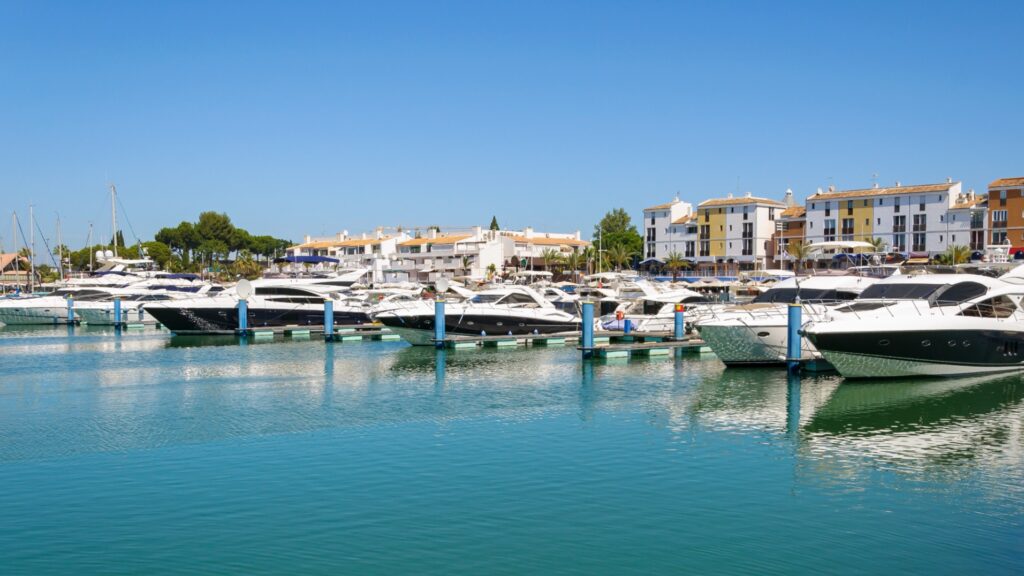
Vilamoura is a well-known beach resort among golfers who wish to train their swing or lower their handicap because there are no less than five championship golf courses located in and around the area. Some lodging establishments provide special green fees and additional benefits, such as complimentary shuttle service to and from the clubhouses, to its guests.
Vilamoura is also known for having Portugal’s biggest marina, with 825 berths and space for boats up to 60 meters long. The esplanade is surrounded by upscale restaurants and fancy boutiques, and it’s great for people-watching, especially in August when Lisbon’s jet-set strolls the streets dressed to the nines.
There are many kid-friendly activities at this family-friendly location. The boardwalk serves as the starting point for coastal cruises and other water sports, and PRAIA DA MARINA offers pedalo rentals on the sand.
The 18-hole mini-golf course at the family golf park has an old Rome theme. The Romans also had remains, which had a 2nd-century villa called the MUSEU CERRO DA VILA, which had sunken baths, salt tanks, and even striking mosaics.
1. Faro
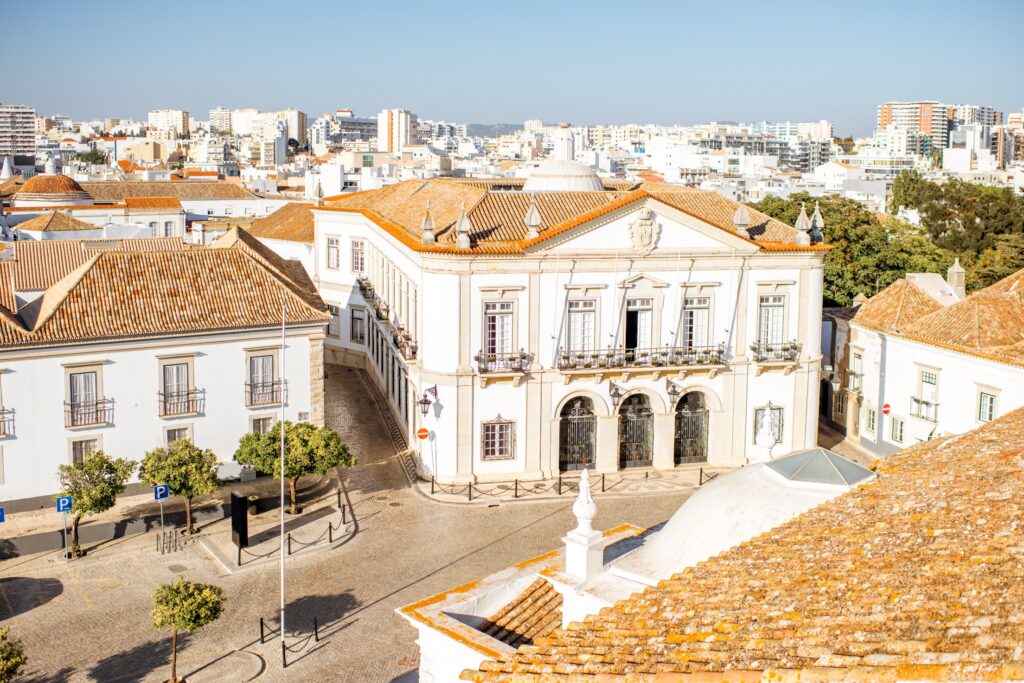
The Algarve’s bustling capital city of Faro serves as the entry point for many travelers entering southern Portugal. Faro, the main city in the area, with a population of about 50,000 and is a significant center for contemporary manufacturing and industry. But the area tourists would want to go to is the Old Town.
Faro’s Cidade Velha is surrounded by strong defensive walls and is built atop Roman and Moorish ruins. The great earthquake of 1755 caused significant damage to the town, and the majority of what you see today is from the 18th and 19th centuries. The iconic CHURCH is surrounded by a maze of cobblestone lanes and green squares.
As you continue your exploration, you’ll come across a variety of cafes and eateries hidden between rows of orderly homes and artisans’ studios. A fantastic MUSEUM displays artifacts found nearby and beyond.
A small marina is located on the adjoining esplanade, and beyond it are wetlands and lagoons filled with marine life. This stunning NATURAL PARK is made up of a number of islets and large sandbars, each with its own spectacular BEACH, one of which is named after the city.
Conclusion
These are our Top 10 Places To Visit in Algarve Portugal.
With so many beautiful places to see and explore in Algarve, it feels unfair to leave out our top 10 picks and so many other places which are as good as the ones listed above. However, the objective of this article is not to list every single great place but the 10 places we believe deserve to be at the top spots.
With that said, which one of these places would you consider going on your next vacation? Have you ever been to any of them? Let me know in the comments below.
Check out my YouTube channel if you would like to watch some of my other favorite picks.
If you would like to connect with me, send a suggestion, make a request or even just wanted to say hi, please shoot me a DM on Instagram. I’ll personally reply to you 🙂

